每日观察:关注Android Market付费应用收益(9.13)
1)移动分析公司Research2Guidance日前发布报告指出,Android Market主流产品仍是免费、广告赞助版应用,但在今年8月份,该应用商店各类付费版应用营收介于300美元至2.1万美元之间,每款Android应用自发布以来平均创收2500美元。该公司认为,选择开发竞争性更小,定价更高的应用类型,开发者甚至有望实现900%的潜在收益。
Android Market约有四分之一的下载量来自游戏产品,但由于该领域的竞争更激烈,游戏开发者在过去数月中的收益正逐渐下滑。
值得注意的是,该应用商店利润最可观的产品是天气应用,部分原因是该类应用选择余地较有限,而且几乎是每个智能手机用户必备应用;调查还发现,Android Market用户并不排斥为优秀的商务应用付费。
从应用数量增长率上看,Android Market仍比App Store更胜一筹,在今年8月新增2万多款应用,而iPhone App Store同一时期的新增应用仅为1.5万款。在9月初,Android Market应用总数为27万7252,付费应用所占比例仍是35%,付费应用平均售价为3.13美元。
Android Market总下载量预计于9月中旬达到60亿次,每周都有近1500名新发行商加入该应用商店。
2)据Rovio北美总经理Andrew Stalbow所称,《愤怒的小鸟》在今年8月初突破3亿次下载量,并在43天之后达到3.5亿次下载量。Rovio目前每月售出100万件小鸟T恤,100万个毛绒玩具。
如果每件T恤售价为10至20美元,每个毛绒玩具售价9至20美元,Rovio与零售商进行50%的收益分成,那么可以算出Rovio每月至少已通过这两项周边产品创收1000万美元。
市场调查公司AYTM最近的小规模抽样调查结果表明(游戏邦注:其调查对象为500名18岁以上的美国成人用户),在18至24岁用户群体购买《愤怒的小鸟》的付费意愿比25岁以上群体高33%,而男性玩家的付费转化率比女性玩家高35%。
在这些至少下载过一款小鸟游戏的受访者中,53%用户玩的是免费版游戏,他们甚至没买过99美分的付费版本。
Android用户在这些受访者当中占41%,iPod touch用户有33%,iPhone用户比例为32%,PC用户有25%,iPad用户为15%,还有6%其他平台(如Ovi、weOS等平台)用户。
有13%受访者称自己对《愤怒的小鸟》很上瘾,12%用户表示自己玩该游戏超过25次,后来不得不删除该应用以抑制游戏成瘾的行为。
3)据gamasutra报道,Capcom手机游戏工作室Beeline Interactive最近根据查尔斯·舒尔茨的花生漫画形象,推出授权手机游戏《Snoopy’s Street Fair》。
玩家在游戏中的任务是建设和管理一个街道集市,以便“花生成员为一个小联盟棒球赛集资购买新球服”。该游戏仍用免费增值模式,支持以微交易形式购买道具和虚拟商品。
Capcom和Beeline过去的授权手机游戏还包括基于Where’s Waldo?、Mr.Bill、Amdrican Gladiators和蓝精灵题材的作品。
4)手机游戏公司MocoSpace最新调查结果表明,不同人种的虚拟商品消费行为存在差民,美国白人和黑人手机社交游戏玩家的虚拟商品消费潜力比西班牙人种更高。
MocoSpace调查对象是4万名手机社交游戏玩家,其中白人占18%,其购买虚拟商品占26%,非洲籍美国受访者占36%,其购买虚拟商品比例占38%,而西班牙裔美国人占31%,但其虚拟商品消费比例仅21%。
调查还发现,亚籍美国人、美洲印第安人和太平洋岛民的虚拟商品消费比例与其受访者数量相当,这些人种在受访者中各占4%的人口和消费比例。该公司之前的调查报告还显示,男性与女性的虚拟商品消费比例是9:1。
5)据pocketgamer报道,丹麦在线外卖公司Just-Eat推出的首款iOS广告游戏《Belly & Brain》已实现23万次下载量,玩家访问游戏达160万次,该公司最近又与该游戏开发商Lava Level合作推出了新游戏《Food Chain》。
这是一款连线消除游戏,支持iPhone/iPad玩家与一个AI或真实玩家对决,并将于不久后推出Android版本。
6)市场调研公司IDC最新数据预测,移动互联网用户今后5年的复合年增长率将达16.6%,其用户总数将在2015年超过PC和其他有线网络用户。
IDC预测全球互联网用户将从2010年的20亿增长至2015年的27亿,全球将有40%的人口是网民,随着平板电脑的崛起,PC互联网使用率将停止增长,并逐渐呈下滑倾向。
该公司还指出,移动网络运营商应尽快找到解决移动数据流量将在同一时期增加26倍的对策,而内容供应商也需想法抓住移动平台的发展机遇,这种形势也将为零售和电子商务公司带来更多商机,广告和营销服务公司也有望从中分得一杯羹。
7)据PaiContent报道,社交游戏开发商Zynga日前宣布前迪士尼互动发行高级副总裁Adam Sussman加盟Zynga团队,负责监管Zynga移动内容业务。
Sussman曾在迪士尼负责数字娱乐内容业务,在2015年开始加入THQ,负责产品开发、市场营销、业务发展等项目,后来又加入EA旗下的移动部门。在今年初,Sussman重新回归迪士尼,为其效力7个月之后转向Zynga。
前几个月EA高管Jeff Karp以及前EA首席运营官John Schappert加入了Zynga。
8)法国发行商Gameloft日前通过Facebook宣布,取消其首款基于Unreal Engine 3的手机游戏项目《March of Heroes》,但并未说明具体原因。
该公司曾在今年5月的E3大会上展示这款iOS和Android第一人称射击游戏的预告视频,观察者称Gameloft取消该项目可能有两个原因:一是游戏效果并不如Gameloft预期那样理想,所以该公司出于游戏质量考虑取消了项目;第二个原因可能与Unreal引擎的技术或者授权问题有关。
但由于Gameloft已表示他们计划在2012年发布四款基于Unreal引擎的游戏,所以观察者认为应该可以排除第二个原因。Gameloft在公司声明中表示,他们在未来数月仍将致力于开发好游戏,并着力推荐基于内部技术的《Modern Combat 3》。(本文为游戏邦/gamerboom.com编译,如需转载请联系:游戏邦)
1)Report: Android Market Nearing 6 Billion Downloads; Weather Apps Are Makin’ It Rain
Rip Empson
The Android Market continues to explode. Recent statistics published by research firm Ovum predict that app downloads in Android’s marketplace could reach 8.1 billion this year, compared to 6 billion for iOS, with total growth in app downloads expected to be as much as 144 percent this year. Today, mobile research firm Research2Guidance is releasing a report that gives a detailed look into the Android marketplace’s current escalating growth, what’s trending, and what categories of apps are making the most money.
Traditionally, free, ad-supported apps have gobbled up most of the share in the Android Market. But what about those paid apps, how much are they making, and are they worth it? The research firm found that, in August, cumulative revenue from each category varied from $300 to $21,000, with the average Android app having generated $2,500 since publishing. While this isn’t a mind-boggling average, it’s not so bad either. What’s more the research firm said that, just by “choosing the less competitive and more price intensive category, developers can increase their potential revenue by 900 percent”.
In terms of categories, unsurprisingly, nearly a quarter of all apps downloaded on the Android Market are games, as this has long been the largest and fastest growing category on the app store, preferred by developers across the board. However, it seems the intense competition in the gaming space has led to diminishing revenue as monetization potential slipped over the last few months.
On the other hand, what may be a bit more surprising is the most lucrative category of apps in the market: On average, weather apps have generated the highest total revenue from paid downloads. Part of the reason for this is that the selection is limited, and it’s really a must-have app for every smartphone user — we want to know whether we’re about to walk into a tornado or not. Of course, the use case is very specific, and most are loathe to use (or develop) yet another weather app. There are only so many possibilities.
The research firm, instead, advised developers to consider innovating on business tools — users are not as opposed to paying a price for a good business app that helps improve efficiency, for example, and the space, the firm said, is far less crowded than the rest.
But how about the app store’s growth? According to the report, the Android Market remains ahead of Apple’s App Store in terms of additions of content. During August, the store grew by more than 20,000 apps, during which time Apple added another 15K apps to its iPhone App Store. As of the beginning of this month, the total number of apps in Android Market was 277,252, and the share of paid apps remains at 35 percent, with the average selling price of those paid apps being $3.13.
Android Market is nearing 6 billion total downloads, which should be reached by the middle of September, the report said, and every week nearly 1,500 new publishers join the store. (source:techcrunch)
2)With Rovio making at least $10 million a month from plushes and t-shirts, a survey finds 53% of users are playing free versions
by Jon Jordan
At the last count, over 1 million Angry Birds games are now being downloaded across various gaming platforms on a daily basis.
It’s no surprise then that the franchise has jumped from 300 million downloads in early August to 350 million 43 days later.
What’s more significant, especially for Rovio’s bottomline, however, is it’s now selling 1 million t-shirts and 1 million plush toys every month, at least that’s according to new North American general manager Andrew Stalbow.
Given that the t-shirts retail for $10 to $20, while the plushes go for $9 to $20, assuming a 50 percent share with retailer, that’s at least $10 million a month for Rovio; likely a low estimate.
Half and half
As for the wider phenomenon, market research outfit AYTM has been surveying Angry Birds players, albeit in a small, self-selected manner.
It reckons 18-24 year olds are 33 percent likely to buy Angry Birds games than people who are 25 or older, while male gamers are 35 percent more likely than women to upgrade from a free Lite version of the games to paid versions.
Still, of the 500 US adults aged 18+ who were surveyed and had downloaded at least one Angry Birds game, 53 percent were playing free versions, not even spending 99c to get a full version.
Distribution per device was split 41 percent Android, 33 percent iPod touch, 32 percent iPhone, 25 percent PC, 15 percent iPad and 6 percent other (Ovi, webOS, etc).
As for the games’ impact on people, 13 percent said they felt addicted when playing, and 12 percent of people who had played Angry Birds more than 25 times had deleted it for that reason.(source:pocketgamer)
3)Snoopy’s Street Fair Continues Capcom’s Licensed Mobile Push
by Frank Cifaldi
Capcom mobile division Beeline Interactive will continue its push for licensed mobile games with Snoopy’s Street Fair.
The game is based on Charles Schulz’s Peanuts comic strip, and tasks players with building and managing a street fair to “help the Peanuts gang raise funds for new baseball uniforms they need to play in a little league baseball tournament.”
The game, as expected, will operate on a free-to-play model: the game itself will be freely downloadable, but will offer microtransaction-based in-game items.
While no specific platforms were announced, Beeline said Monday the game will be available for smartphones.
The move signifies a continued push by Capcom and Beeline to utilize well-known but underutilized licenses for its mobile games. Past examples include Where’s Waldo?, Mr. Bill, American Gladiators and its popular duo of games based on The Smurfs. (source:gamasutra)
4)Virtual goods purchases vary by ethnicity
Dean Takahashi
White and black mobile social gamers spend more on virtual goods purchases than Hispanics spend less, according to a survey by mobile gaming firm MocoSpace.
The survey shows that consumer markets vary in their spending habits when it comes to mobile social games. And sometimes there’s no particularly good explanation for it. Virtual goods are items such as weapons that users can pay for with real money in mobile social games.
The survey of 40,000 gamers showed that whites, who were 18 percent of surveyed users, accounted for 26 percent of virtual goods purchases. African Americans, who were 36 percent of respondents, made up 38 percent of purchases. By comparison, Hispanics were 31 percent of respondents and only 21 percent of the purchasers.
Asian Americans, Native Americans and Pacific Islanders spent about their fair share. Each group accounted for 4 percent of the respondents and 4 percent of the purchases. Justin Siegel, chief executive of MocoSpace, said that virtual goods are so mainstream now that it makes sense to start segmenting it and better understanding usage patterns based on ethnicity and gender. A previous survey showed that men outspend women 9 to 1 on mobile virtual goods.(source:venturebeat)
5)After 230,000 downloads of its first advergame, online takeaway service Just-Eat returns for second helpings
by Jon Jordan
Back in November 2011, we hooked up with online takeaway service Just-Eat, which had just released its first iOS game.
Of course, there’s nothing new about advergame games, except that Belly & Brain was quite enjoyable and a fairly light sell.
Sure, its eponymous stars were also used in the company’s general marketing, but the game itself was a decent free experience: ‘We didn’t want to look like your dad flirting with your new girlfriend’, explained chief marketing officer Mat Braddy, memorably.
Full up?
So after 230,000 downloads and 1.6 million sessions of Belly & Brain, Just-Eat is back with another release.
Developed by the same team – Dundee developer Lava Level – Food Chain is a food symbol match-3 game with additional Versus mechanics whereby you’re playing against AI or a real player, sending obstacles into their grid in a similar manner to the two player mode in Bust-A-Move/Puzzle Bobble.
Once again it’s a free download for iPhone and iPad, with an Android version on way, and – yes – there is a link through to Just-Eat’s website if playing sharpens your taste buds.(source:pocketgamer)
6)Mobile Internet user to eclipse wireline users by 2015
By Ryan Kim
It’s going to be a mobile Internet world and we’ll just live in it. That’s the conclusion of IDC, which is forecasting that mobile Internet users will grow by an annual compound rate of 16.6 percent through 2015, when they will pass PC and other wireline Internet users.
That’s not entirely surprising if you’ve been following along. Mary Meeker, the former Morgan Stanley Internet analyst and now Kleiner Perkins VC, forecast last year that the cross-over point would come around 2014. She said at the time that we were in the midst of a fifth computing cycle, following the mainframe computing eras of the 1950s and 60s, the mini-computers of the 1970s, the PCs of the 1980s, the desktop Internet era of the 1990s and now the mobile Internet age. Earlier this year, IDC noted that smartphone shipments in the fourth quarter last year topped 100 million units, pushing past PC sales.
IDC said the total number of Internet user will grow from 2 billion in 2010 to 2.7 billion in 2015, with 40 percent of the world’s population online. But as Internet penetration picks up, it will happen more on mobile devices than traditional PCs, something Apple founder Steve Jobs noted in dubbing this the post-PC era. IDC said that as tablet use in particular picks up, it expects PC Internet usage to stagnate and then slowly decline.
As IDC notes, this shift will make the world a different place. For one thing, mobile network owners will need to get ready for this explosion in mobile data traffic, which is expected to increase 26-fold between 2010 and 2015. Content owners need to think about what they’re doing to optimize for mobile. And retail and commerce companies need to take note of how users are accessing the Internet on the fly, which can provide both opportunities and challenges to online and physical retailers. Advertising and marketing is also being transformed by mobile as brands, and advertisers are starting to look at how to best reach consumers with messages that can be tailored to their preferences, context and location.(source:gigaom)
7)Zynga Poaches Mobile Exec Sussman From Disney
by Mike Rose
Adam Sussman, originally senior VP of publishing at Disney Interactive Studios, has left the company to join social games giant Zynga.
Sussman originally worked at Disney at the start of the millennium, overseeing business initiatives in digital entertainment for the company until 2005.
He then served two years as general manager at THQ, where he worked on product development, marketing, business development and strategy, before joining Electronic Arts’ mobile division.
At the start of this year he rejoined Disney, where he has worked for seven months. This move to Zynga, as reported by PaidContent, will see him focusing on mobile content for the company.
Sussman is the latest in a string of big name industry veterans who have joined up with the FarmVille studio.
Last month, EA’s Jeff Karp joined Zynga, while just months before, EA’s chief operating officer John Schappert moved to the company to fill an executive post. (source:gamasutra)
8)Gameloft cancels its first Unreal Engine shooter March of Heroes without reason
by Jon Jordan
In a rather awkward statement on Facebook, Gameloft has announced its first game created using Unreal Engine 3 – the much anticipated March of Heroes has been cancelled.
No reason was given for the decision to kill the iOS and Android-based FPS, which was playable at E3 2011 in May, and shown in a high end trailer, which displayed Vietnam-era action with Huey gunships and lush jungle warfare, Afghan desert settings where you took on Soviet Mil-24 helicopters, and even an underwater frogman section.
Shot in the foot
There are two obvious reasons for the decision: either the game didn’t turn out as well as Gameloft had planned so it was canned for quality reasons; or something to do with Unreal itself, either technical or licensing-wise.
However, as Gameloft says it expects to release games using the technology in 2012 – it was known it had four titles using Unreal in production – we can only assume March of Heroes wasn’t as impressive as it looked.
Instead, Gameloft says, “Our developers will be focusing on developing awesome games in the months to come and working on making them better than ever”, in particular it cites Modern Combat 3, which is developed using Gameloft’s internal tech, as consolation.
You can read the full statement here, and check out what you won’t be playing in the following video (at least until Gameloft removes it).(source:pocketgamer)

























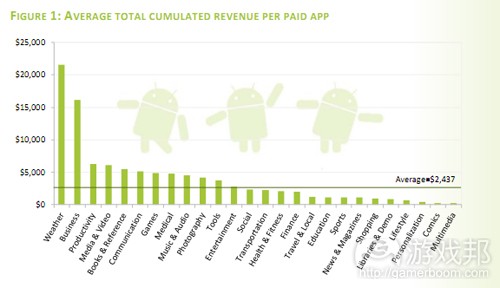
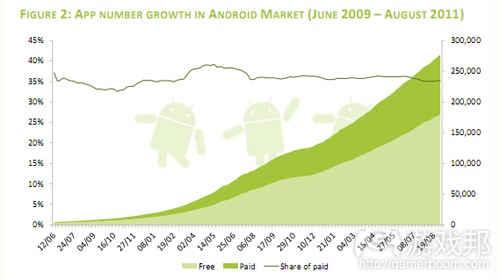

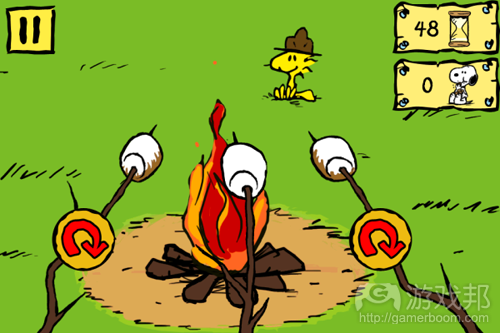

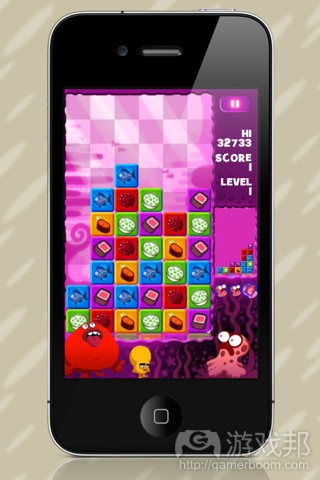

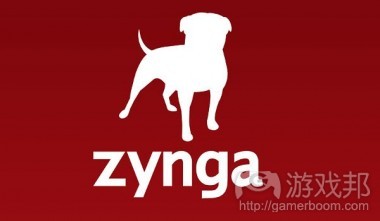















 闽公网安备35020302001549号
闽公网安备35020302001549号